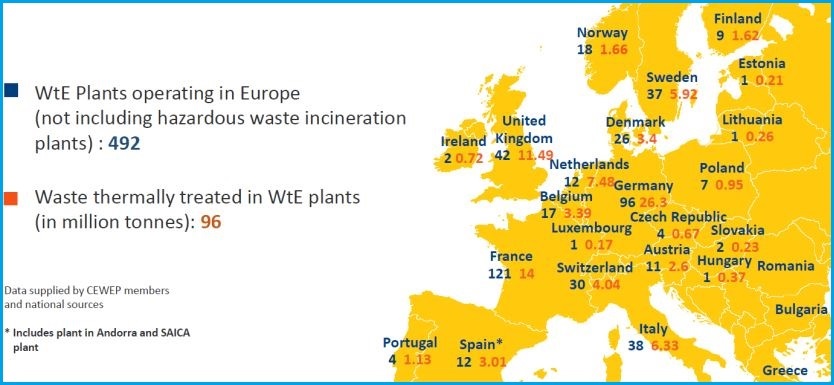
Photo: Zero Waste Europe
Including waste incineration in the EU Emissions Trading System (EU ETS) would encourage waste prevention and recycling, yielding both climate and employment benefits, according to a new study requested by Zero Waste Europe (ZWE) and carried out by CE Delft.
The European Emissions Trading System (EU ETS) doesn’t include municipal waste incineration. In July, the European Commission presented its Fit for 55 package for the establishment of a carbon trading system for the road transportation and building sectors, and the expansion of EU ETS to shipping. ZWE has called on the European Parliament and the Council of the EU to amend the European Commission’s proposal and include municipal waste incinerators, thus making them pay for their emissions.
Additional costs for incineration can act as an incentive for waste prevention and recycling
“If incineration is included, waste companies will have to buy emission credits for each tonne of CO2 they emit when treating household, company, and industrial waste. This additional cost of incineration can act as an incentive for waste prevention and recycling, which will then become more competitive (less costly) than incineration,” Zero Waste Europe said.
The potential impact was studied under two scenarios: when only the fossil CO2 emissions are included (CO2 emissions from e.g., incinerating plastics), and in the case of both fossil and biogenic CO2 emissions (stemming from incinerating food waste) are included in the EU ETS.
The move may result in 6,800 extra jobs in 2022, up to over 21,000 jobs in 2030
As recycling activities are more labour-intensive than incineration of waste or landfilling, including incineration in EU ETS may result in new full-time jobs in a range between 6,800 in the fossil scenario in 2022 and over 21,000 in the fossil and bio scenario in 2030, reads the report called Waste Incineration under the EU ETS – An assessment of climate benefits.
The inclusion of incineration in EU ETS would encourage recycling activities by households and companies. The impacts will be bigger for companies (8% to 25% waste reduction) than for households (0.2% to 5% waste reduction).
There are around 390 so-called waste-to-energy plants operating in the countries under the scope of the EU ETS
According to the Confederation of European Waste-to-Energy Plants (CEWEP), there are around 390 such units operating in the countries that participate in EU ETS. In 2018 such units together emitted 79 megatonnes (Mt) of CO2: 43 Mt from fossil waste and 36 Mt from organic waste, the report underlines.

Janek Vahk, Climate, Energy and Air Pollution Coordinator at Zero Waste Europe, said the report shows the inclusion would be a triple win-win situation by benefiting not only the climate but also creating employment and helping Europe to move towards a more circular economy by encouraging waste prevention and recycling.


















Be the first one to comment on this article.